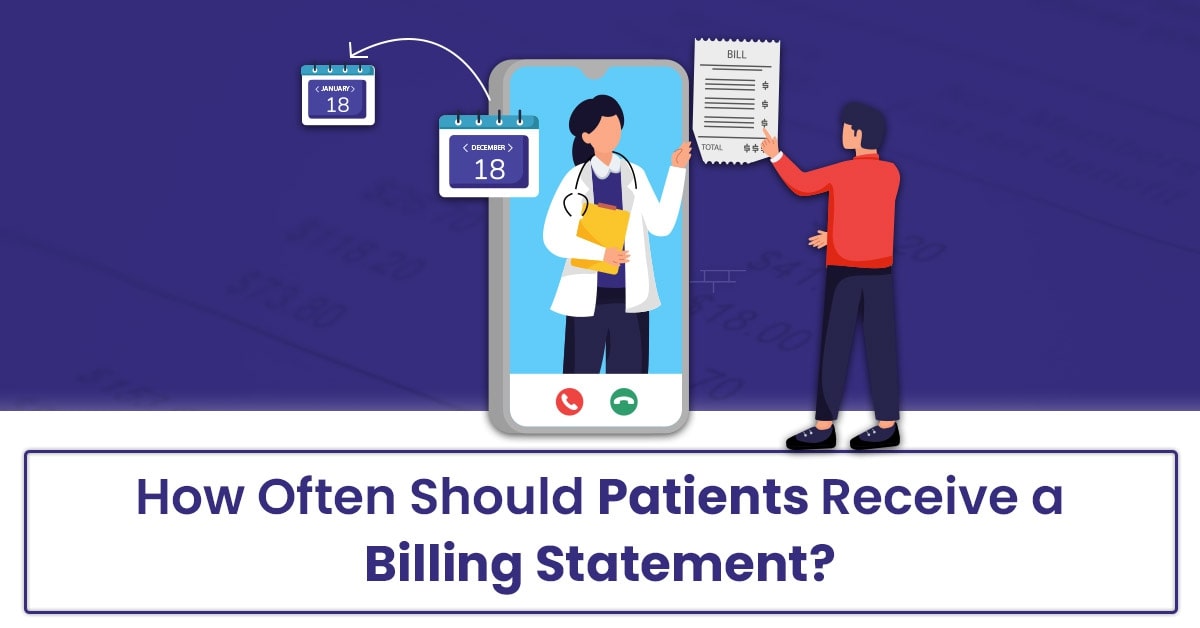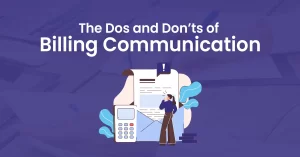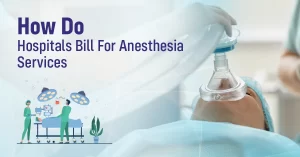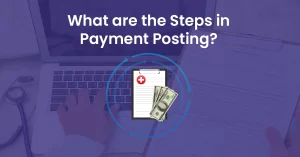A well-organized patient billing statement is an important tool that helps both healthcare providers and patients stay on top of financial matters.
This statement summarizes all charges, out-of-pocket expenses, insurance adjustments, and payments made during a certain period.
With a patient billing system and an integrated electronic health record (EHR) system, healthcare providers can track every service delivered, apply accurate insurance claims, and keep patients informed about their remaining balance.
❝ Regular and timely billing statements ensure that patients know their financial obligations without feeling overwhelmed. The goal is to send them often enough that patients are aware of their dues, but not so frequently that it becomes a nuisance. Balancing the frequency of statements can directly improve the efficiency of your practice management.❞
In this article, we’ll explore how often patients should receive billing statements, the key elements of these statements, their different formats, and how to generate them effectively.
Understanding Patient Billing Statement
A patient billing statement is a detailed document that summarizes the financial charges for the medical services provided by healthcare professionals to a patient. It includes a breakdown of treatment costs, doctor’s fees, hospital charges, lab fees, and any other services rendered. The statement also shows payments received, insurance adjustments, out-of-pocket costs, and the remaining balance due from the patient.
This important communication tool helps keep everything transparent between healthcare providers and patients by clearly outlining their financial obligations. The goal is to ensure that patients understand the costs, insurance claims, deductibles, and co-pays involved in their care.
❝ By receiving regular billing statements, patients can keep track of what they owe, what’s been paid, and any outstanding amounts. This ensures that both parties are on the same page when it comes to financial responsibilities.❞
Who Provides Billing Statements To Patients?
Billing statements are typically provided by the billing departments of healthcare providers such as hospitals, clinics, doctor’s offices, and other healthcare organizations. These departments are responsible for collecting all the necessary financial information, including treatment costs, doctor’s fees, insurance payments, adjustments, and patient balances.
In some cases, a medical billing service provider, like BellMedEx, is hired to manage this process. These full service medical billing companies help ensure that all data is accurately compiled, that payments are processed correctly, and that billing statements are sent to patients on time.
➜ However, the question remains: How often should these billing statements be sent to ensure a smooth billing process and maintain proper cash flow for the practice?
How Often Should Patients Receive A Billing Statement?

Patients typically receive their billing statements on a monthly basis, which is usually after 30 days or sometimes slightly later, depending on the billing cycle. However, in specific cases, such as patients undergoing long-term treatments or ongoing care, the frequency of billing statements may need to be adjusted to meet the unique needs of the treatment plan.
It’s important to remember that sending billing statements on a bi-weekly or weekly schedule can be highly effective for maintaining a smooth cash flow. If you rely solely on monthly statements, you may experience a rush of payments all at once, which can overwhelm your billing department and lead to more payment errors by patients.
➜ A more balanced approach is to divide your patient base into smaller groups and send out billing statements weekly. This allows for a steady flow of payments throughout the month, reducing stress on your billing team and improving the accuracy of payments received.
By organizing patients into different groups, you can ensure consistent revenue and evenly distribute the workload among your staff members.
Best Ways For Grouping Patients Before Sending Billing Statements
To establish an efficient patient billing workflow, you can organize your patients into different groups based on various factors. This helps streamline medical claim payment processing, ensure timely follow-ups, and improve the accuracy of your billing statements.
👉 Alphabetical Grouping
Grouping patients alphabetically by the first letter of their last name is a simple and effective method. This works well when billing duties are assigned based on the alphabet, making it easy for your staff members to handle specific groups and send out patient billing statements efficiently.
👉 Aging Buckets
Aging buckets divide patients into groups based on how old their balances are. For example, patients can be grouped into 0-15 days, 16-30 days, 31-60 days, and so on. This method helps prioritize older balances that require more immediate attention. By focusing on overdue accounts, you can improve cash flow and reduce delayed payments.
👉 Insurance Carriers
Grouping patients by their primary insurance carriers is a more complex but useful method. This helps streamline the A/R follow-up process with different health insurance payers, as each insurer may have different billing requirements and timelines. While this method requires careful planning, it can ensure that each patient group is manageable and that medical billing and coding claims are processed efficiently.
Outcomes of Delivering Bi-Weekly and Weekly Billing Statements
By implementing bi-weekly or weekly patient billing statements, your healthcare practice can experience several positive outcomes:
✅ Balanced Workload ➜ Sending patient billing statements more frequently allows you to distribute the workload across one or two weeks. This makes it easier for your billing staff to manage recent payments, insurance claims, and other billing tasks more efficiently, without feeling overwhelmed.
✅ Stable Cash Flow ➜ Regular generation of patient statements ensures that payments are received more consistently. This helps your practice maintain a steady cash flow, ensuring that revenue comes in regularly, which is essential for the smooth operation of your healthcare practice.
✅ Better Financial Planning ➜ When your practice has consistent revenue, it becomes easier to plan for the future. You can use the regular flow of payments to budget for expenses and make more accurate financial forecasts. This leads to better financial health and more effective practice management in the long run.
✅ Improved Patient-Provider Communication ➜ More frequent physician billing statements keep patients well-informed about their outstanding balances. This can help reduce the time accounts stay overdue, leading to quicker payments and fewer payment delays. As a result, your relationship with patients becomes clearer and more transparent.
How to Generate a Patient-Friendly Billing Statement?
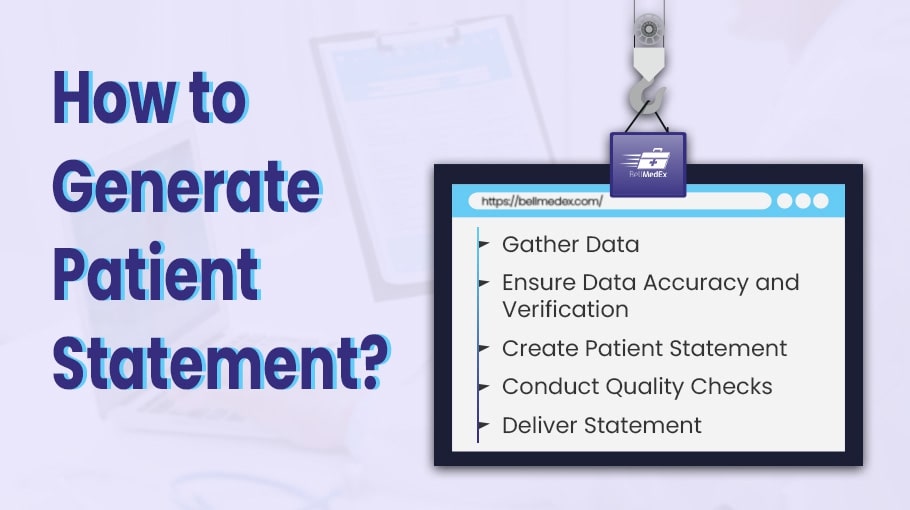
Managing patient billing requires following the right steps to generate a patient-friendly billing statement. Here’s a breakdown of the process:
1). Gathering Data
The first step in creating a patient-friendly billing statement is to collect all the necessary data. This includes information about the patient’s treatment, such as medical codes, insurance details, and the patient’s payment history. All this information should be recorded in the EHR system (Electronic Health Record) to ensure the data is up-to-date and complete. The treatment details include the dates of service, the procedures performed, and the medications prescribed. This data helps make sure that all services are correctly documented for billing.
2). Ensuring Data Accuracy and Verification
Once all the data is gathered, it’s important to verify the information to ensure it’s correct. Verification includes checking the date of service (DOS), confirming that the medical codes are accurate, and ensuring that insurance information is properly applied. This step is important to avoid mistakes or delays in the medical claims payment process.
3). Creating the Patient Billing Statement
After verification, the next step is to generate a billing statement which is patient-friendly. This is usually done with the help of Revenue Cycle Management (RCM) software, which formats the statement automatically. The billing statement must be clear and easy to read so that patients can easily understand their financial obligations. Using an automated system helps save time and reduce errors in the billing process, making it more efficient.
4). Conducting Quality Checks
Before sending the patient billing statement, a quality check is necessary. This involves a thorough review of the statement to make sure all information is correct. The totals and subtotals should be checked, ensuring that discounts and insurance adjustments are applied properly. This step helps avoid mistakes and ensures that the patient receives a correct and complete statement.
5). Delivering the Statement
The final step is delivering the medical billing statement to the patient. Healthcare providers can send billing statements through various methods, such as email, traditional mail, or through an online portal. The method of delivery should be chosen based on the patient’s preference, ensuring that the statements are sent in a timely and convenient way. Offering different delivery options increases patient satisfaction, giving them flexibility in how they receive their billing statements.
What are the Main Elements of a Patient Billing Statement?
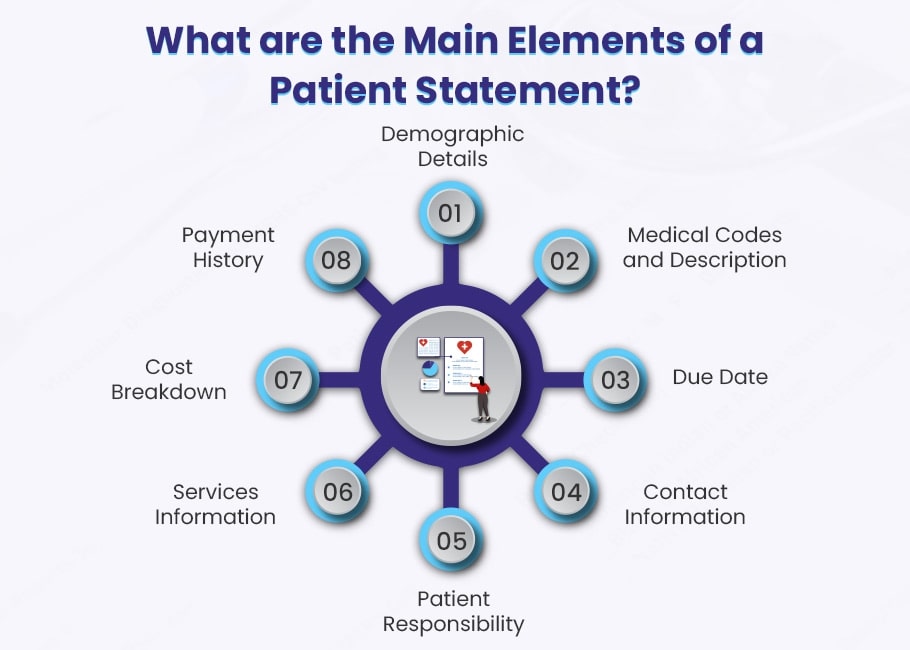
To create clear and easy-to-understand billing statements, healthcare providers use several important elements. These elements help make the payment process smoother and more efficient for both the patient and the provider. Here are the essential parts of a patient billing statement:
1️⃣ Demographic Details
This section includes important patient information such as the patient’s name, date of birth, address, and patient ID. Having accurate demographic details ensures that the billing statement reaches the correct person and the information is easy to identify.
2️⃣ Services Detailed Information
This part lists all medical services provided, such as treatments, procedures, medications, and dates of service. It helps patients understand exactly what services they are being billed for, making the statement clear and transparent.
3️⃣ Medical Codes and Descriptions
This section uses standard medical codes, like ICD-10, HCPCS, and CPT, to describe the medical services provided. Each code comes with a short description of the service. Accurate coding is important to ensure the correct reimbursement and smooth insurance claims.
4️⃣ Cost Breakdown
This part shows the full cost of each service, including the total charges, any insurance adjustments, write-offs, discounts, and the patient’s financial responsibility (what the patient still owes after insurance payment). This clear cost breakdown helps patients see exactly what they need to pay.
5️⃣ Payment History
This section details all payments made by the patient so far, including the date and the amount paid or still owed. This helps keep track of the patient’s payment history and ensures everything is recorded correctly for transparency.
6️⃣ Due Date
The due date is the exact date when the patient’s payment is expected. Clearly stating the due date helps prevent confusion and ensures that payments are made on time.
7️⃣ Contact Information
This section provides details about how the patient can contact the billing department if they have questions or concerns. It usually includes a phone number, email address, and sometimes the billing department’s physical address.
8️⃣ Patient Responsibility
This part explains the amount the patient is responsible for paying after the insurance contributions and previous payments have been applied. It helps the patient understand their financial obligation and plan their payments accordingly.
Standard Formats for Sending Medical Billing Statements to Patients
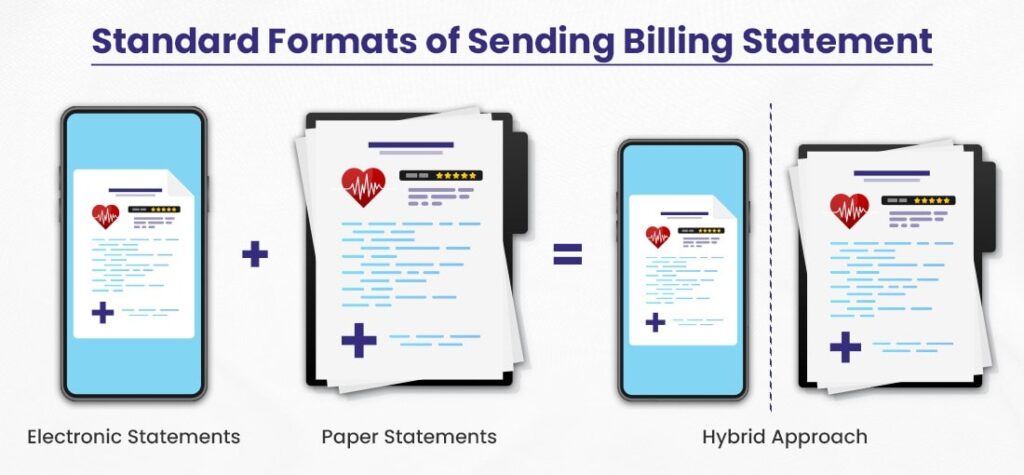
Healthcare providers can use different formats for sending billing statements to ensure accessibility and convenience for all patients. It is important to balance technology with patient care and choose the most suitable delivery method for each patient. Below are the main formats of sending billing statements:
Electronic Statements (E-Statements)
Electronic statements, also known as e-statements, are sent to patients via email or made available on an online platform. This digital format is very efficient and easy to access, allowing patients to view their billing information immediately. E-statements can be automated, meaning healthcare providers can automatically generate and send billing statements. Patients receive their statements quickly and can view, download, or print them whenever it is most convenient. E-statements are also environmentally friendly, as they reduce the use of paper.
Paper Statements
Despite the growing popularity of electronic solutions, paper statements are still important for many patients. Paper billing statements are physically mailed to the patient’s address and include all the necessary billing information in printed form. This format is particularly helpful for patients who prefer physical documents or do not have regular access to digital platforms. To send paper statements, the billing department prints the statements, folds them, places them in envelopes, and mails them to the patient’s address.
Hybrid Approach
The hybrid approach combines both electronic and paper statements. This method allows patients to choose the format they prefer, offering flexibility. Some patients may prefer e-statements for their speed and convenience, while others might want paper statements for record keeping. The hybrid model improves patient satisfaction by catering to individual preferences and ensures that every patient receives their billing information in the most comfortable and convenient way.
What Happens if a Patient Fails to Pay a Billing Statement?
If a patient fails to pay a billing statement, it can lead to serious consequences for both the patient and the healthcare provider. Initially, healthcare providers will send payment reminders or follow-up notices, which may include late fees. However, if the payment is still not made, the account could be sent to collections.
Once an account is sent to collections, it can severely affect the patient’s credit score, making it harder for them to get loans, credit cards, or even housing in the future.
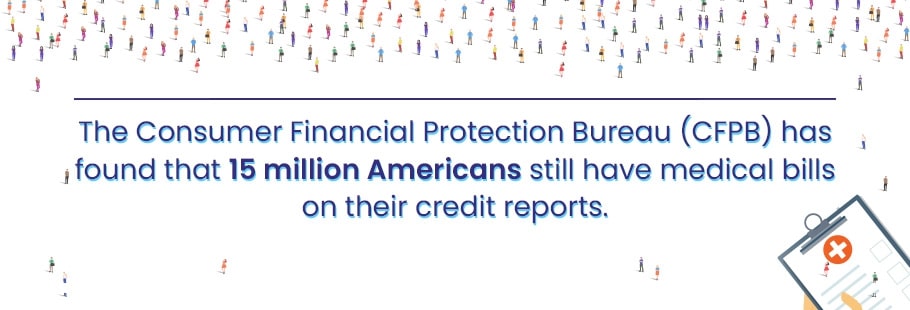
In fact, the Consumer Financial Protection Bureau (CFPB) reports that nearly 15 million Americans have medical bills listed on their credit reports. Many of these individuals come from low-income communities and regions in the southern United States, with a collective total of $49 billion in unpaid medical debt sent to collections.
It’s important for both healthcare providers and patients to understand the impact of unpaid medical bills and the potential consequences of failing to pay billing statements on time.
Key Practices for Generating Patient-Friendly Billing Statements
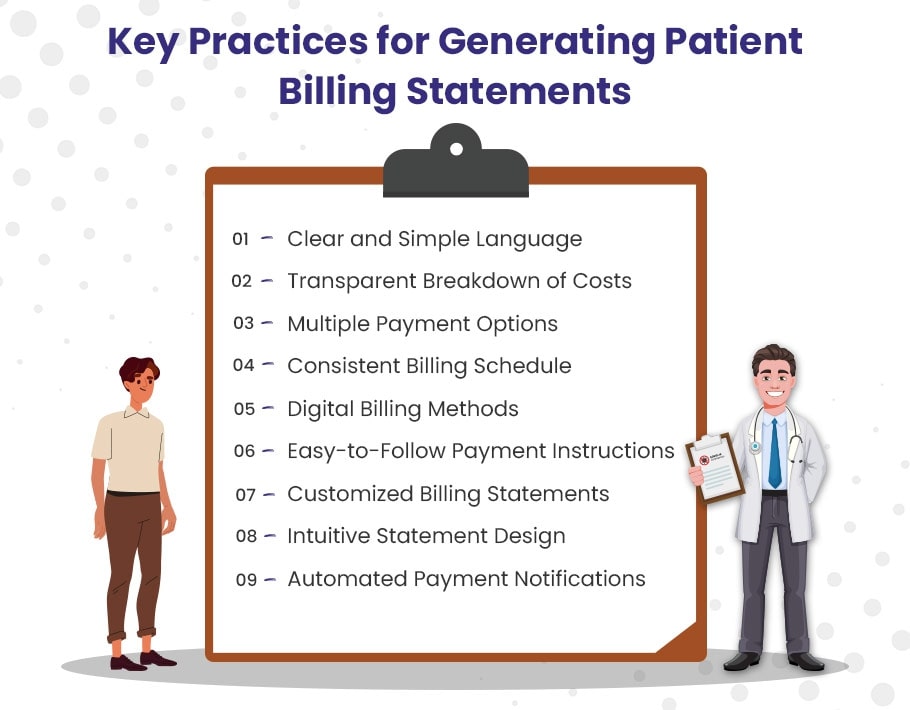
Generating patient billing statements can be challenging for healthcare providers due to issues like medical terminology, incomplete patient information, confusion around health insurance coverage, and more.
To make the process easier, we’ve compiled best practices that can improve billing statements and help avoid common problems.
😊 Clear and Simple Language
Use simple language to explain the billing statement. Avoid using medical terms that might confuse patients. For example, add a description of the treatment and procedures in easy-to-understand words. This can help patients understand their medical bills clearly and reduce confusion.
😊 Transparent Breakdown of Costs
Provide a detailed breakdown of costs in the billing statement. Show exactly what patients are being billed for by listing each service and its associated cost. This helps build trust and credibility with patients, as they will know exactly what they are paying for.
😊 Multiple Payment Options
Offer various payment methods such as online payments, mail-in checks, and phone payments. Providing multiple options makes it easier for patients to pay their medical bills. Using online payment portals or automated phone payment systems can encourage timely payments and improve convenience.
😊 Consistent Billing Schedule
Set a consistent billing schedule—such as weekly, bi-weekly, or monthly. This encourages patients to pay on time, helping you avoid delays in receiving payments and ensuring a smoother cash flow for your practice.
😊 Digital Billing Methods
Whenever possible, use digital platforms to send billing statements via online portals or email. This makes it faster for patients to receive their statements and reduces the cost of mailing paper statements. Digital statements are environmentally friendly and more efficient.
😊 Easy-to-Follow Payment Instructions
Provide clear payment instructions in the billing statement. Include due dates, payment methods, and contact information for billing questions. Simple and clear instructions make it easier for patients to pay their bills on time and avoid confusion.
😊 Customized Billing Statements
Personalize billing statements by including the patient’s name, specific services, and dates of treatment. Personalization increases patient engagement, makes the statement more relevant, and can improve overall patient satisfaction.
😊 Intuitive Statement Design
Design billing statements with readability in mind. Use large fonts, organized layouts, and highlight important details. A clear design helps patients quickly find important information, such as the due date or balance due.
😊 Automated Payment Notifications
Set up automated payment reminders through email, SMS, or phone calls. These reminders help encourage timely payments and reduce delays in receiving payments. However, make sure the reminders are not too frequent, so patients don’t feel overwhelmed or frustrated.
Need an Automated Patient Statement Solution? Contact BellMedEx!
At BellMedEx, we first analyze your healthcare practice and patient workflows to provide the best automated patient billing solution. Here’s how we do it:
➜ Workflow Analysis: We evaluate your practice’s billing process, including patient visit frequency and insurance details.
➜ Customizing Billing Schedules: Based on our analysis, we recommend the best statement schedule for your practice—whether it’s weekly, bi-weekly, or monthly.
➜ Tailored Statements: Our system sends out patient billing statements automatically, making the process seamless and reducing errors.
With BellMedEx, your patient statements are tailored to your practice’s needs, ensuring timely payments and a smoother billing experience. ➡️ Contact us to learn more!
